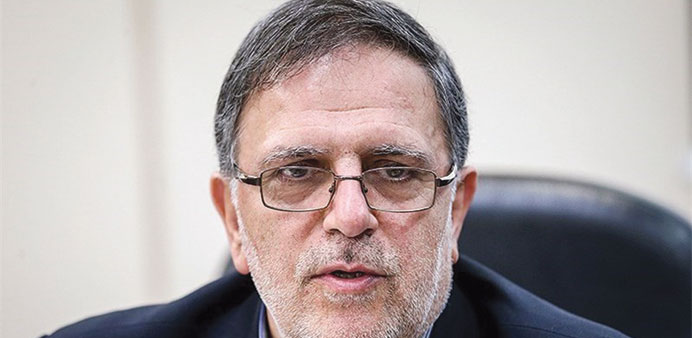Iran’s central bank governor Valiollah Seif has said the cabinet has agreed to separate monetary and fiscal policies. That would allow the central bank to focus on “controlling liquidity and bringing down inflation,” which Seif said is the regulator’s main priority.
Bloomberg
Dubai
Iran’s central bank governor Valiollah Seif said the administration of President Hassan Rohani has given the regulator more independence to curb one of the world’s highest inflation rates.
Seif, in his first interview with an international news organisation since taking office in August, said Rouhani’s cabinet has agreed to separate monetary and fiscal policies. That would allow the central bank to focus on “controlling liquidity and bringing down inflation,” which Seif said is the regulator’s main priority.
Rohani inherited an economy in recession as international sanctions against Iran’s nuclear programme weakened its currency and accelerated inflation to about 40% in September. “We are now facing stagflation,” Seif said on October 12 in Washington, where he was attending the annual meetings of the International Monetary Fund and the World Bank. “Expansionary monetary and fiscal policies will not help the growth.”
While the central bank will struggle to alleviate the effects of sanctions, analysts at Eurasia Group and the Economist Intelligence Unit have said Seif can resist government policies to provide cheap credit, deployed by former president Mahmoud Ahmadinejad.
Granting the central bank more independence means it “can start doing what central banks do in this sphere and clearly it’s going to be as successful as circumstances will allow,” said David Butter, Middle East analyst and associate fellow at foreign policy research group Chatham House in London.
It’s “what you would expect now that Iran is putting out this image after eight years of having their economic policy being very politicised, that they’ve started to get back to something more rational,” he added.
“Under the previous administration, the allocation of credit to many sectors was not based on the analysis of experts,” Seif said. “There was a housing project for the poor, and a lot of resources were allocated to that, about 40% of the liquidity volume.”
The government’s intervention in credit allocation helped drive the ratio of non-performing loans to 23% in 2010, before dropping to 16% in February 2011, according to the International Monetary Fund. The ratio of bad loans now stands at 15% and the central bank is “determined to bring it down” as part of efforts to “bring stability to the banking system,” Seif said.
The country’s monetary policy is decided by the Money and Credit Council, which is headed by the central bank chief.
Seif is part of an economic team assembled by Rouhani following his surprise first-round victory after he pledged to seek a negotiated end to the standoff with Western powers, which accuse Iran of developing nuclear weapons. Iran says its programme is peaceful.
The sanctions will reduce Iran’s foreign-exchange reserves to about $70bn by the end of this year, according to a study by the research firm Roubini Global Economics and Mark Dubowitz, president of the Foundation for Defence of Democracies.
Of the total, Iran probably only has immediate access to $20bn, covering less than three months of imports, the study found. About $50bn is tied up in countries that buy Iranian oil, such as China and Turkey, and can only be spent there under the sanctions regime. The Iranian central bank said in July it had more than $100bn in reserves. Seif declined to disclose the value of the bank’s holdings.
The rial lost more than half its dollar value in the 12 months before Rouhani’s election in June, though it has since rebounded about 20%. “The foreign-exchange market is relatively stable,” Seif said.
The central bank estimates that Iran’s economic growth will be flat in the year that ends in March, compared with a contraction of 5.4% in the previous 12 months, he said. The economy may grow 3% in the year starting March 2014, he said.
To ease the effect of tighter monetary policy on growth prospects, the central bank is looking “to allocating resources to productive activities” and working to improve the business environment, he said.



